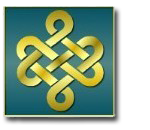TRACES OF ST GEORGE
The foot & armour of St. George are but a hint of things to come. And beneath the art lies the complex story of George's meaning to Wales & England. George was not only a religious symbol. His image was a political emblem in the guise of religious iconography.
Henry Tudor (Henry VII) landed in west Wales in 1485 and - displaying the St. George's cross - defeated Richard the Third on Bosworth Field. Earlier royal links with St. George stretched back to the Garter Knights, founded under Edward III. Later Henry V triumphed under George's protection at Agincourt. And Henry VII welcomed this branding - as in this etching from a c.1505 painting [right] of the Royal family, kneeling beneath the dragon-defeating patron Saint of England.
But why on a Welsh church wall, ours being one of only three such Georges found in Wales? Firstly, it says, Henry VII is Welsh - 'the one who set us free'. But secondly, the marcher lands wished to show particular allegiance.
Clinching evidence comes from a great tournament, mounted in 1507 by Sir Rhys ap Thomas at Carew Castle in Pembrokeshire. Here, a dramatic tableau depicted a 'mutually embracing' St. George and St. David.







